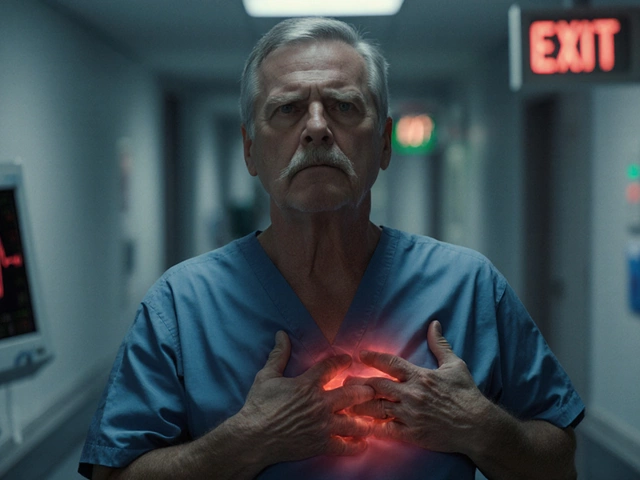When pain grabs hold and you just can’t stand it anymore, it’s easy to feel hopeless or alone. Here’s the honest truth: even on the worst days, there are real things you can do to get a little relief and stop the spiral. The first thing is giving yourself permission to pause. If you’re having a pain flare, drop anything non-essential. Lie down, turn off bright lights, and grab your ice pack or heating pad—whatever usually settles your nerves. Sometimes, even a minute of focused breathing or listening to a favorite song can interrupt the pain cycle just enough to think straight.
If you can, jot down what’s happening: where the pain is, what you were doing, even what you ate or how you slept. Patterns don’t always show up right away, but this kind of tracking can reveal triggers you hadn’t noticed. And try not to tough it out alone for too long. Even sending a quick text to someone who “gets it” can shake off some of the loneliness, and a little encouragement in your inbox can be a small lifeline.
- Immediate Steps When Pain Peaks
- Practical Coping Strategies for Daily Life
- Mindset Shifts and Support Networks
- When to Seek More Help
Immediate Steps When Pain Peaks
When pain skyrockets, it’s not about powering through; it’s about using proven tricks that buy you a breather. The very first rule—stop what you’re doing. Whether you’re at work, out shopping, or just getting through chores, put it all on hold. Tell yourself it’s okay to hit pause. Fighting your body gets you nowhere fast.
Next, try some of these tactics that pain docs and people living with chronic pain swear by:
- Find a comfortable spot and change your position. Sometimes just sitting or lying differently can cut pain levels in half.
- Use heat or cold (whichever usually works for you). I keep a microwavable heat pack and a gel ice pack in easy reach. Skin-safe temps only!
- Control the atmosphere—dim the lights, lower noise, grab a soft blanket or your pet. My cat Luna is honestly better than painkillers some days.
- Focus on breathing: Inhale slowly through your nose for a count of three, hold for three, then exhale for three. There’s real science behind this: slow breathing tells the nervous system to chill out, lowering stress chemicals and pain intensity.
- If you’re on a pain plan from your doctor, follow it. Take your scheduled meds or approved rescue medication—don’t wait for the pain to spiral out of control.
If these steps take the edge off, that’s a win. Tracking what helps gives you a go-to plan for next time and something to show your doctor at your next visit.
According to a 2023 report from the American Academy of Pain Medicine, over 50% of people with chronic pain say that a combo of quick fixes—rather than just meds—helps them survive flare-ups without heading to the ER. Check out this data on what works in the moment:
| Quick Relief Method | Percent Reporting Benefit |
|---|---|
| Heat/Cold Packs | 62% |
| Guided Breathing | 57% |
| Changing Position | 61% |
| Music/Distraction | 46% |
| Contacting Support | 34% |
So, next time the pain ramps up, start with these simple steps. Even if you only get a tiny bit of relief, that’s progress you can build on.
Practical Coping Strategies for Daily Life
Living with chronic pain isn’t about powering through—most folks who try that find themselves way worse off. It’s about finding small, repeatable things that turn down the volume. First thing: move, but gently. If you sit too long, everything usually locks up. Light stretching, slow walks around the block, or even wiggling your toes in bed helps keep joints and muscles from screaming louder.
In some parts of Europe, particularly France, people turn to energetic massage as a holistic way to support physical and emotional well-being. These treatments aim to rebalance the body’s energy flow, reduce tension, and complement more conventional pain relief strategies.
Don’t ignore your routine. Bodies love structure, even if it takes effort. Set regular times for meals, medication, light exercise, and sleep. Building a simple daily checklist—like drinking a full glass of water first thing or setting an alarm for a quick stretch—can make the mess of pain days feel just a little more manageable.
- Heat and cold packs work. Heating pads can help loosen stiff muscles in the morning, while ice is better for reducing swelling after being active.
- Break tasks into baby steps. Need to do laundry? Sort it one day, wash the next, fold later. This keeps you from getting overwhelmed.
- Distraction is underrated. Favorite TV shows, audiobooks, puzzles, or even a chat with a friend can shift your brain’s focus away from pain, even if just for ten minutes.
- Mind the ergonomics. Adjusting your chair, bed, or work setup with small supports or pillows can cut back on unnecessary aches.
Recent studies say folks with chronic pain who keep a sleep log and set bedtime routines see real improvement in their pain sensitivity and energy. And if you ever wonder if pacing yourself really works—a big UK poll found that almost 70% of chronic pain patients felt better when they stuck to specific, planned rest periods, instead of waiting for exhaustion.
None of this is magic. Some days, nothing works. But stacking up small habits adds up, and those wins—no matter how tiny—are worth it.

Mindset Shifts and Support Networks
Getting through chronic pain is never just a battle with your body. It’s a daily mental marathon too. Experts who study pain know that stress, frustration, and hopelessness can actually turn the volume up on your pain signals. That doesn’t mean it’s all in your head—it means your mind and body are totally connected.
Let’s talk about mindset. This isn’t some “just think positive” nonsense. It’s about finding mental habits that really help, and practicing them a little at a time. Stuff like gratitude journaling has actually shown benefits in people with persistent pain, even if it sounds cheesy at first. Even writing down one small thing that didn’t suck about today can help retrain your brain to notice small wins, instead of just pain.
Another approach is pacing. People who ignore pain trying to keep up with daily life often end up worse off—overdoing it leads to crashes and even more pain. By setting realistic goals and breaking tasks into short, doable steps, you give yourself a fighting chance. Cognitive Behavioral Therapy (CBT) is also well-researched for pain. It helps you spot unhelpful thought patterns (like “I can’t do anything anymore”) and swap them for more useful ones. CBT isn’t about toxic positivity; it’s more about being kinder to yourself.
Support networks can be lifesavers. In fact, studies show people dealing with pain fare better when they feel connected—whether that’s family, friends, or even online support groups where everyone has similar struggles. A good support buddy doesn’t need to “fix” you; just having someone listen can lighten the load. If you’re not close to anyone who understands, check out pain communities on Facebook or Reddit. People share what really works for them, plus there’s less shame asking for help in a group where everyone gets it.
Sometimes, it helps to know you don't have to do this solo. There are pain management programs run by hospitals and clinics—many offer group sessions or online workshops focused on coping strategies and self-advocacy. If you’re interested in more formal help, talking to a counselor familiar with chronic pain, either in-person or by video call, could be worth a try.
| Group Support: What Works Best? | Reported Benefit (%) |
|---|---|
| Peer Support Groups | 67 |
| Online Communities | 56 |
| One-on-One Counseling | 74 |
When to Seek More Help
Sometimes, doing everything you can at home just isn’t enough. If your pain keeps you from eating, sleeping, or looking after yourself for days at a time, it’s time to reach out. Don’t wait until you’re burned out or can’t cope—healthcare pros want to help, and chronic pain doesn’t have to be something you “just live with.”
Check in with a doctor if you notice:
- You suddenly can’t move a limb, or you lose control of your bladder or bowels (that’s an emergency—call right away).
- Your chronic pain changes fast, gets way worse, or moves to a new spot.
- You get new symptoms like fever, extreme fatigue, confusion, or major mood changes.
- Pain relief (even prescription meds) stops working, or you need way more than usual to function.
Here’s the truth: according to the CDC, about 20% of adults in the U.S. live with chronic pain. But less than half ever talk to a pain specialist. That means a lot of people miss out on targeted therapies—like nerve blocks, trigger point injections, or even newer options like telehealth support groups.
| When to Call for Help | What to Expect from Your Provider |
|---|---|
| Pain keeps you from basic daily routines | Medication review, new therapies, pain management plan |
| Significant mental health changes (like depression or thoughts of self-harm) | Referral to counselor or pain psychologist |
Sometimes, people feel brushed off when they bring up pain with their doctor. Don’t let that stop you from speaking up. Write down changes in your symptoms and bring a friend or family member to back you up if you’re worried you won’t be heard. Try saying: “This pain hasn’t responded to my usual tools. I need a better plan.”
“Chronic pain is a disease in its own right—and seeking help is not a sign of weakness. It’s a step toward a better future.” — Dr. Cindy Steinberg, pain expert
And if you ever feel truly overwhelmed or hopeless, reach out to a mental health professional or a crisis line. Chronic pain can mess with anyone’s emotions—getting help for your mind matters as much as treating your body.




